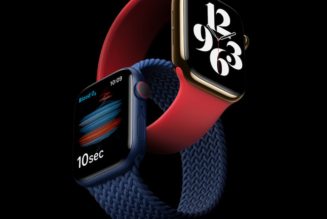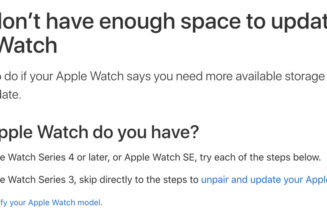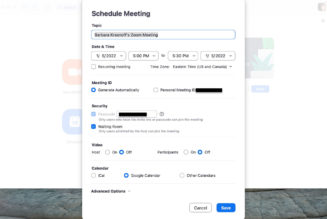The Stream Deck Plus is a slick and well-built piece of hardware that can’t realize its full potential just yet.
Elgato’s Stream Deck devices are popular among both gamers and streamers and gadget nerds working from home thanks to their unique, customizable keys. Stream Decks can be used for anything you might want to push a button for, such as muting a microphone in a video call, controlling smart lights, or even running automations on a computer. The latest entry into the lineup, the Stream Deck Plus, steps up the hardware game by adding a small touchscreen along with a bank of rotary dials. It allows for some interesting new applications, even if it isn’t fully realized in its current state.
While the hardware of the Stream Deck Plus breaks new ground for Elgato, Loupedeck, another manufacturer of control peripherals, has been all in on dials since day one. Loupedeck’s products are remarkably similar to what’s offered by Elgato, with a large library of free applications to help optimize your workflow. There’s a fair amount of overlap in what’s offered by the two developers, but Loupedeck’s products and applications are pointed more toward creatives spending their time engrossed in photo or video editing, while Elgato tends to focus largely on streamers and content creators.
The Stream Deck Plus is $199.99, which is more expensive than the standard Stream Deck MK. 2 ($149.99) or Stream Deck Mini ($79.99) but is still less expensive than the oversize $249.99 Stream Deck XL. The closest analog outside of the Elgato ecosystem that provides similar hardware is the $179.99 Loupedeck Live S.
Despite the potential of the Stream Deck Plus’ new hardware, there aren’t enough functions that make use of it yet, which makes its $200 price tag a tough sell.
The most significant difference between the Stream Deck Plus and prior models is its four rotary dials, located below the customizable buttons. Dials have been a staple on other streaming devices like the Loupedeck for some time. They’ve even started to show up on keyboards, too, so the fact that Elgato added a few knobs to its hardware seems like a logical next step. Thankfully, Elgato understands the importance of haptics, and the new hardware is pretty dope. The dials feel good to use, with grippy textured sides, and move in clearly felt steps. Each dial can also be pushed with a satisfying click, which gives them a third input in addition to rotating left or right. The whole thing kind of looks like a miniature mixing board thanks to those dials.
:format(webp)/cdn.vox-cdn.com/uploads/chorus_asset/file/24279920/226431_BOTM_Stream_Deck_AKrales_0153.jpg)
The dials can be used to make small adjustments to values and properties on your desktop. This can be the output volume of specific devices or applications or fine-tuning the brightness of compatible lighting elements. However, the best use I found was assigning a dial to control multimedia playback. Because each step registers as a single input, I programmed one dial to skip back and forth through my Spotify playlists in addition to pausing and resuming playback. That would have otherwise needed three separate buttons with a traditional Stream Deck.
If four dials aren’t enough for your needs, Elgato has also included what it’s calling “Dial Stacks.” Accessible through the Elgato software, each dial stack allows you to layer multiple functions on a single dial, letting you cycle through layers by pushing the dial. The current function being used is then reflected on the screen above the corresponding dial.
The other addition to the Stream Deck Plus is a narrow touchscreen situated just below the familiar programmable keys and above the dials. Software divides this single screen into four sections, each one corresponding to whatever function the dial below is mapped to.
The screen feels very similar to the Corsair iCue Nexus, which is an LCD touchscreen that attaches to your keyboard to display system information or provide access to additional macros and specific functions. Considering that Corsair and Elgato became part of the same larger company, it seems likely that some of the same tech was adopted for the Stream Deck Plus.
:format(webp)/cdn.vox-cdn.com/uploads/chorus_asset/file/24279915/226431_BOTM_Stream_Deck_AKrales_0091.jpg)
The touchscreen is bright, legible, and responsive. Though it’s relatively small and has a rather chunky bezel around it, the 1200 x 800 resolution is sharp and easy to read. It also allows you to swipe between multiple pages of your current Elgato profile, a function that usually requires programming a dedicated button.
Unfortunately, while the screen responds to tap controls, these are tied exclusively to the corresponding dial function you’ve assigned, which renders the touchscreen incompatible with the plug-ins used with the regular Stream Deck buttons. The closest you can get right now is assigning hot keys to the dials, but this feels like a squandered opportunity.
As this is a Stream Deck, there are eight customizable keys with LCD screens inside of them that change their appearance depending on what function they’re programmed to. Eight keys are two more than you get on the Stream Deck Mini but seven fewer than on the midsize Stream Deck MK. 2. But the Plus’ dials effectively provide four more buttons for customized functions, so the number of hardware things you can customize totals 12.
The feedback from the buttons on the Stream Deck Plus has stayed the same from previous iterations, but they’re still fun to push. They’ve each got a membrane switch with a tactile bump that provides sufficient acknowledgment to your poking and prodding.
The small LCD screens built into them support a variety of image formats for custom icons, including GIFs. These can be programmed to display app icons or even change their appearance when a status changes on a device (like when a mic is hot or a camera is on).
All of the buttons on the Stream Deck Plus are just slightly larger than on the older models. It’s not a huge change, but it does assist in keeping all of those tiny icons more legible at a distance.
:format(webp)/cdn.vox-cdn.com/uploads/chorus_asset/file/24279919/226431_BOTM_Stream_Deck_AKrales_0132.jpg)
Compared to the Stream Deck MK. 2, the Plus is slightly taller and wider. The attached stand sits the Plus at a fixed 45-degree angle just like the MK. 2 but is secured to the display with a pair of Phillips-head screws. Thankfully, this hardware is exposed and easy to remove if you’d prefer to lay the display flat, but why Elgato abandoned adjustable stands with the original Stream Deck remains a mystery. Finally, just like other Stream Deck models, the Plus connects to your PC via a single USB-C to USB-A cable from the back of the unit.
:format(webp)/cdn.vox-cdn.com/uploads/chorus_asset/file/24279909/226431_BOTM_Stream_Deck_AKrales_0023.jpg)
The hardware is fun to look at and feels great, so it’s unfortunate that the utility for the dials and touchscreen is extremely limited right now. Only a handful of plug-ins are available, and two of them are tied directly to Elgato applications that are intended to be used with Elgato hardware. While third-party developers currently have the resources they need to develop plug-ins for the new hardware, at the time of writing, the following list of applications is all that’s available if you don’t own additional Elgato hardware.
- Stream Deck: Allows you to set up dial stacks and adjust the brightness of the Stream Deck display
- System: Assign hot keys or multimedia controls
- Volume controller: Adjust playback volume of your system or specific applications
- Elgato Wave Link: Adjust pickup and output levels using Elgato’s Wave Link software
The following require an Elgato camera and Elgato Key lights, respectively:
- Elgato Camera Hub: Fine-tune zoom, contrast, exposure, and other camera properties
- Elgato Control Center: Adjust lighting temperature and brightness
Normally with the Stream Deck, I run out of buttons before I run out of plug-ins, but currently, I’m struggling to find ways to use the four dials provided on the Stream Deck Plus. Even some simple functions like adjusting the brightness of the (non-Elgato) smart lighting in my home or setting timers would pay dividends in expanding the appeal of the Stream Deck Plus.
Elgato’s software to program the Stream Deck hasn’t received any drastic changes to accommodate the Plus, for better or worse. That is to say, if the Stream Deck software or marketplace gave you fits, you won’t find anything in its latest version that’s powerful enough to change your mind. There is a small learning curve to the software, especially if you’re new to the Stream Deck, but the interface is pretty straightforward and can be understood without having to experiment too much.
:format(webp)/cdn.vox-cdn.com/uploads/chorus_asset/file/24305605/Screenshot_2022_12_20_130018.jpg)
Adding functions to the various inputs on the Stream Deck is accomplished via drag and drop, with any changes reflected immediately on your device. The initial list of applications baked into the Elgato software when you first install it is a bit underwhelming. All of the cool stuff you can do with a Stream Deck is tucked away in the Elgato marketplace or on random GitHub pages, which doesn’t make it easy to find new plug-ins unless you know exactly what you’re looking for. Right now, if you search for Twitch- or Discord-adjacent plug-ins, you’ll get a minimum of five similar-looking results that might do the same thing. It’s tough to know without actually going through the process of installing them.
Unfortunately, the Stream Deck user experience is still a “you get out of it what you put into it” situation, which isn’t terribly attractive for anyone who doesn’t have the time to troll the Elgato Reddit or experiment with different plug-ins. It isn’t easy to find what you want on Elgato’s marketplace, but it does have a wealth of free stuff for you to customize your Stream Deck with. However, many of the same goodies you can get on the Elgato marketplace are available for Loupedeck devices, too. But since all of Loupedeck’s products have had dials on them since day one, there are far more plug-ins that make full use of the hardware.
:format(webp)/cdn.vox-cdn.com/uploads/chorus_asset/file/24305636/Screenshot_2022_12_20_130654.jpg)
I don’t want to knock the marketplace too much, though. It can be a mess, sure, but it’s also responsible for giving the Stream Deck the versatility that so many owners benefit from. In addition to dedicated plug-ins for Twitch and YouTube, there are plug-ins to view stock prices, control Midi devices, or adjust the smart lighting around your home. Much of this added functionality and appeal is thanks to the efforts of third-party developers like Krabs, which is responsible for starting Stream Deck Labs, an organization not affiliated with Elgato that serves as a way for other devs to coordinate their efforts as they pertain to the Stream Deck.
The vast amount of free content is even more surprising when you consider that developers currently lack any way to monetize their contributions officially. Every plug-in is a purely voluntary contribution made to the larger Elgato community. Several of the plug-ins I use for my personal Stream Deck are all built by third-party developers. If Elgato plans to realize the potential of the Stream Deck Plus or some planned hardware in the future, it will be the efforts of the community that make it happen.
It’s difficult to recommend the Stream Deck Plus in its current state when less expensive Stream Decks that make better use of their hardware exist. As cool as they are, the utility for the dials and touchscreen is extremely limited right now, with only a handful of plug-ins available and with some tied directly to Elgato applications that are intended to be used with Elgato hardware.
I’m excited to see what the Stream Deck Plus will be capable of a year from now after developers have had time to properly exploit the hardware. If you’re dying to get your knob fix right now and don’t own a bunch of other Elgato hardware, my advice is to check out the Loupedeck Live S. It doesn’t have a touchscreen or as many knobs, but the buy-in is slightly less at $180.
If you’re looking for a way to spice up your work-from-home or gaming experience, you might want to look into the Elgato Stream Deck Mini. It only has six buttons but still has access to all the same plug-ins for just $80.
It’s a safe bet that future versions of the Stream Deck will also have dials and screens on them, but hopefully there will be better support for those features when those devices arrive.









